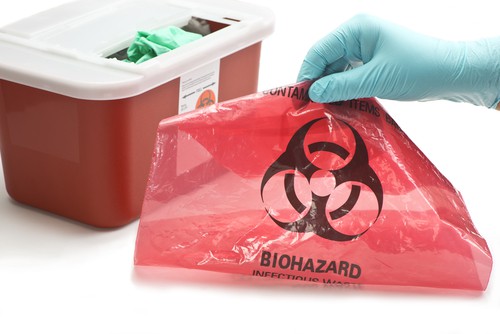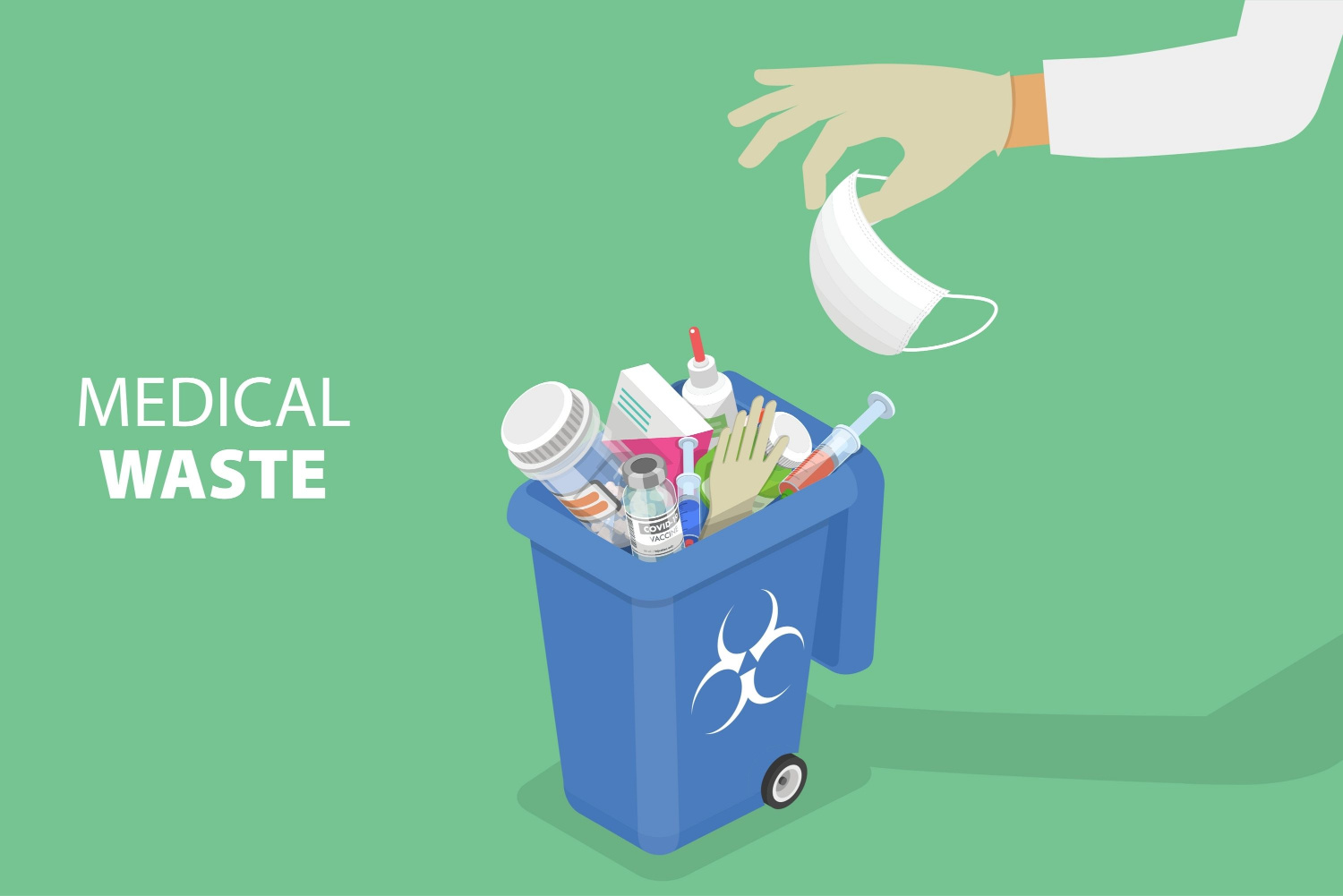Specialist Medical Waste Disposal Service: Protecting Your Center and Neighborhood
Wiki Article
Lasting Solutions for Medical Waste Disposal
The correct management and disposal of clinical waste is crucial in maintaining a lasting and safe health care system. As the volume of medical waste proceeds to increase, discovering sustainable options ends up being increasingly vital. This necessitates the adoption of eco friendly and efficient techniques for throwing away medical waste. This introduction will certainly check out different sustainable services for medical garbage disposal, including waste segregation and sorting, on-site waste treatment systems, recycling and reuse programs, waste-to-energy conversion modern technologies, as well as collaboration and education initiatives. By executing these options, health care facilities can not just lessen the ecological impact of clinical waste, but additionally ensure the safety of health care employees and the general public.Waste Segregation and Arranging
The procedure of waste segregation and sorting is crucial in guaranteeing correct management and disposal of medical waste. Medical waste is identified into different categories based on its potential threat to human health and the atmosphere. Appropriate segregation and sorting of waste aid to minimize the risk of contamination and make sure that each type of waste is handled and disposed of appropriately.The primary step in waste partition and sorting is to determine and separate different sorts of clinical waste at the factor of generation. This entails acknowledging the different groups of waste, such as transmittable waste, sharps waste, pharmaceutical waste, and chemical waste. medical waste removal service. Each category requires specific dealing with and disposal techniques to stop injury to healthcare employees, individuals, and the setting

On-site Waste Therapy Solutions
Proceeding from the previous subtopic on waste partition and sorting, an effective solution for lasting medical waste disposal is the execution of on-site waste treatment systems - medical waste removal. These systems permit healthcare facilities to treat their medical waste on-site, minimizing the need for transport and disposal at off-site facilities. On-site waste therapy systems normally include technologies such as autoclaves, microwave systems, or chemical sanitation unitsAutoclaves, typically utilized in healthcare setups, make use of high-pressure vapor to sanitize and deal with medical waste. This process efficiently kills germs, viruses, and other possibly harmful bacteria, making the waste risk-free for additional handling and disposal. Microwave systems, on the other hand, usage microwave radiation to heat and treat the waste, attaining similar results to autoclaves.
Chemical disinfection units entail the usage of chemicals to sanitize and treat medical waste. These devices can make use of various disinfectants, such as chlorine-based solutions, to counteract pathogens and reduce the danger of contamination. The treated waste can after that be securely dealt with in routine waste streams or undergo additional therapy, such as shredding or incineration.
Executing on-site waste treatment systems offers several advantages. It lowers the ecological influence linked with moving medical waste to off-site centers, decreasing carbon emissions and the risk of mishaps during transport. Additionally, it supplies medical care facilities with more control over the treatment procedure, making sure conformity with regulations and reducing the possibility for unapproved access to sensitive clinical waste.
Recycling and Reuse Programs
To additionally boost lasting medical garbage disposal techniques, medical care centers can execute recycling and reuse programs, building on the foundation of on-site waste treatment systems. Recycling and reuse programs offer an added layer of environmental obligation by drawing away clinical waste from garbage dump and finding alternative uses for specific materials.One key aspect of reusing and reuse programs is the partition of waste at the source. medical waste removal service. By applying proper waste segregation protocols, medical care centers can divide recyclable materials, such as plastics, metals, and glass, from non-recyclable waste. This enables the efficient recycling of these materials, reducing the requirement for virgin sources and minimizing the environmental influence of medical waste disposal
In addition to recycling, health care centers can check out possibilities for recycling particular medical products. As an example, single-use things like surgical drapes and dress can be sanitized and reused, reducing the demand for new products and lessening waste generation. Multiple-use sharps containers can also be employed, reducing the quantity of plastic waste created from disposable containers.
Applying recycling and reuse programs calls for correct framework and training - WasteX Medical Waste Disposal. Medical care centers need to purchase suitable recycling bins, segregation systems, and sterilization tools, along with ensure personnel are enlightened on appropriate waste management practices
Waste-to-Energy Conversion Technologies
One potential strategy to deal with medical garbage disposal sustainably is via the utilization of waste-to-energy conversion technologies. These technologies provide an appealing option to the expanding problem of clinical waste, which positions significant environmental and public wellness risks. Waste-to-energy conversion includes transforming the natural elements of clinical waste right into power, such as warm or electricity, via numerous processes like incineration, pyrolysis, and gasification.Incineration is one of the most commonly utilized waste-to-energy modern technology for clinical waste disposal - WasteX Medical Waste Disposal. It involves the controlled burning of waste at high temperature levels, transforming it right into ash, gases, and warm. This heat can be made use of to produce vapor, which can then be exchanged electricity
Pyrolysis and gasification are more recent modern technologies that supply more eco-friendly alternatives to incineration. Pyrolysis entails heating up the waste in the absence of oxygen, resulting in the manufacturing of gases and char. Gasification, on the various other hand, transforms waste into a synthetic gas or "syngas" that can be utilized as a gas for electricity generation or various other commercial procedures.
These waste-to-energy conversion modern technologies not just minimize the volume of clinical waste but also give a resource of renewable resource. Additionally, they can help reduce greenhouse gas exhausts and dependence on nonrenewable fuel sources (WasteX Medical Waste Disposal). It is crucial to guarantee that these modern technologies are carried out with correct emissions manage actions to decrease any kind of possible adverse effects on air quality and public health and wellness.
Cooperation and Education And Learning Efforts
Partnership amongst stakeholders in the healthcare industry is crucial for implementing lasting services for clinical waste disposal. In order to successfully deal with the difficulties associated with medical waste monitoring, it is crucial for healthcare centers, waste administration business, regulators, and various other pertinent events to collaborate.
In addition, education and learning efforts play an important role in advertising sustainable methods. Medical care experts need to be familiar with the environmental influence of inappropriate waste monitoring and the value of carrying out lasting options. Training programs and educational products can aid them recognize the appropriate segregation of waste, making use of green alternatives, and the advantages of waste-to-energy conversion innovations.
Collaboration and education and learning can likewise facilitate the development of guidelines and standards for medical waste disposal. By collaborating, stakeholders can add to the production of comprehensive plans that make sure secure handling, transport, and treatment of clinical waste.
Conclusion
Finally, embracing lasting options for medical garbage disposal is essential in order to reduce the unfavorable influence on the environment and public health. Waste partition and sorting, on-site waste therapy systems, recycling and reuse programs, waste-to-energy conversion innovations, and cooperation and education campaigns are all important methods to accomplish this objective. Implementing these remedies needs cooperation between health care centers, waste monitoring companies, and government agencies, along with constant education and recognition campaigns.The process of waste segregation and sorting is crucial in ensuring appropriate management and disposal of medical waste.The first action in waste segregation and sorting is to determine and divide different kinds of medical waste at the point of generation. This entails acknowledging the various groups of waste, such as transmittable waste, sharps waste, pharmaceutical waste, and chemical waste.Continuing from the previous subtopic on waste segregation and sorting, a reliable remedy for lasting medical waste disposal is the application of on-site waste treatment systems. The treated waste can after that be safely disposed of in More hints regular waste streams or go through more treatment, such as shredding or incineration.
Report this wiki page